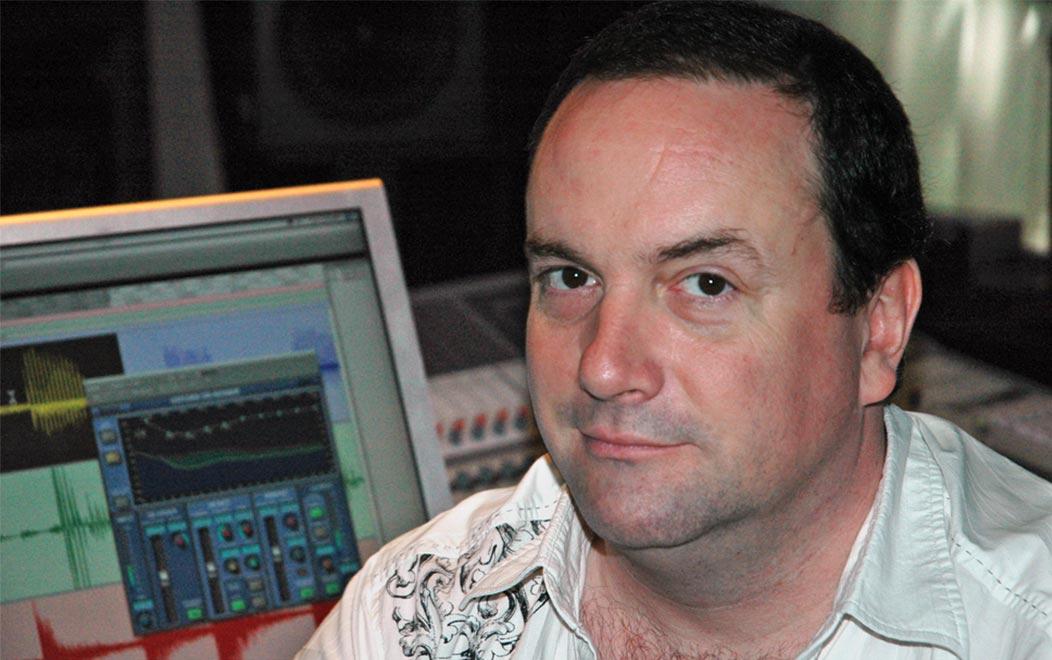Brant Biles: Mastering the Art of Restoration with Sonnox Restore Suite at Mi Casa Multimedia
Mi Casa Multimedia, nestled in the Hollywood Hills of Southern California, has built a reputation as a leader in Surround Sound audio mixing and production for motion pictures, music, and HD video.
Co-founded by producer and synthesist Robert Margouleff and engineer/musician Brant Biles, Mi Casa serves a demanding clientele that includes 20th Century Fox, New Line Cinema, Stevie Wonder, and The Rippingtons. True to their motto “Hi Def Audio for Hi Def Video,” Mi Casa delivers exceptional audio quality, no matter the original condition of the material. A critical tool in their restoration process is the Sonnox Restore Suite of plug-ins. We spoke with Brant Biles about how these tools have been instrumental in recent projects, including the restoration of classic films like Fantastic Voyage and The Sound of Music.

Restoring Classics with Sonnox Restore Suite
Biles has utilized the Sonnox Restore Suite on several notable projects, including the 1966 sci-fi classic Fantastic Voyage and the beloved musical The Sound of Music. “Fantastic Voyage was one of my favorite films as a kid, so it’s been a pleasure to work on it,” Biles shares. The restoration process begins with addressing major audio issues such as dropouts, clicks, and pops. “We use various tools to clean up the egregious elements first, doing a static noise reduction pass. But once you remove that first ‘layer of the onion,’ other artifacts can emerge between cuts that were previously masked by noise.”
The Power of Automate-Ability in Pro Tools
A standout feature of the Sonnox Restore Suite is its integration and automation capabilities within the Pro Tools environment. “Automation is the ‘key to the lock’ with these tools,” Biles explains. “It allows us to tackle noise issues dynamically, adapting to changes in the audio without compromising the integrity of the original material. The team at Fox were amazed at how accurately we could clean up the audio with these tools. When you drop into a specific noise reduction curve, it just cleans it right up.”
Biles highlights the importance of maintaining a constant noise background in restoration projects. “Constant noise doesn’t bother the listener as much as sudden changes in the noise floor, which can be distracting. That’s where Restore’s automation really shines, allowing us to smooth out those transitions.”
Customizing DeNoiser for Precision
When using the Sonnox DeNoiser, Biles often starts with a specific frequency range. “I usually begin with DeNoiser working from about 4kHz and up, leaving the bottom end untouched. I use the auto-sensing feature to track the noise floor, which is one of the plug-in’s most impressive capabilities. It automatically adjusts to the noise without distorting the underlying audio you want to preserve.”
DeBuzzer: A Brilliant Solution for Hum Issues
Dealing with hum from mains power is a common challenge in audio restoration, and Biles finds the Sonnox DeBuzzer particularly effective. “Hum often presents as a 60 Hz noise in the US or 50 Hz in Europe, with harmonics stacking on top. The DeBuzzer can lock onto the fundamental frequency and apply notch filters to the harmonics, tracking shifts in frequency that might occur due to various reasons,” he explains. “This feature is unique to DeBuzzer; it tracks and adapts as the hum frequency shifts, something no other program does as well.”
Biles recounts a specific instance while working on The Sound of Music, where the DeBuzzer proved invaluable. “One of the engineers had removed the 60 Hz hum, but the higher harmonics were still present. I suggested reverting to the original file and letting the DeBuzzer handle the full range of harmonics, which it did perfectly.”
Restoring The Sound of Music to 7.1 Surround
Originally mixed in a 6.0 format with five front channels and a mono surround, The Sound of Music was remixed into a full 7.1 surround format by Mi Casa. “We started with the original 6.0 mix but were asked to create a 7.1 version. Fortunately, we had a 24-track music stem, allowing us to pull orchestral elements into the new mix. The result is a true 7.1 mix from a 1964 film, and it’s outstanding,” Biles says.
The Sonnox Restore Suite played a key role in this project, particularly in addressing noise issues unveiled during the initial noise reduction and filtering passes. “We needed to perform surgical noise reduction and hum removal, and the Sonnox tools handled these tasks with ease,” Biles notes. “Beyond Restore, we also used the Sonnox Oxford SuprEsser, which is exceptional for taming sibilance and 3-5kHz spikes in older dialogue tracks.”
Tailoring Restoration for Each Unique Project
Every restoration project presents its own set of challenges, and Biles appreciates the flexibility that Sonnox plug-ins offer. “Our workflow varies with every project—it’s like walking down a road you build yourself. Sometimes you hit a corner, and other times you find a glorious path,” he reflects. “What I love about Sonnox plug-ins is their intuitive ability to identify the underlying issues beneath the desired audio and make intelligent decisions about what to remove and what to keep. Their automate-ability and precision in targeting specific problem areas without affecting the rest of the audio are truly invaluable.”
For Biles and the team at Mi Casa Multimedia, Sonnox plug-ins are essential tools that enable them to meet the highest standards of audio restoration. Whether working on classic films or new projects, the Sonnox Restore Suite helps them deliver pristine sound that honors the original recordings while elevating them to modern standards.
